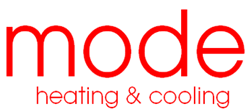Ducted evaporative coolers have become a common cooling system choice in Victoria and can provide whole-of-house cooling. Window mounted and portable evaporative coolers are also available to cool small rooms or to provide spot-cooling.
How do evaporative coolers work?
Evaporative coolers draw hot air from outside through a series of wet filter pads that are supplied with water from a tank at the base of the unit.
Water from the filter pads evaporates, drawing heat out of the air and humidifying it. The cooled, moist air is then blown through the house.
Evaporative coolers work partly by cooling the air inside the house and partly by creating a cooling breeze. To work effectively, some windows or doors have to be left open so the cooled moist air can be exhausted from the house.
Different types of evaporative coolers
Ducted evaporative coolers are available in both standard and inverter models.
Inverter models have a variable speed (or inverter-driven) motor, resulting in lower running costs.
What conditions are evaporative coolers suited to?
As the cooling effect of evaporative systems relies on evaporating moisture from the wet filter pad, they work best in hot, dry conditions.
If the outside air is humid then the cooling effect of the unit is limited, as the water will not evaporate as easily from the pads. As a guide, Melbourne’s average humidity on a summer afternoon is between 40 and 50%, while in Mildura it’s between 20 and 30%. Both of these areas can use evaporative coolers, although they are more effective in Mildura’s drier climate.
Running costs
Evaporative coolers use both electricity and water.
Approximate maximum hourly running costs for how much electricity they use are provided below, although actual costs will depend on the cooling capacity of the unit and the fan speed that you run it on:
- portable units cost 2 to 3 cents per hour
- window/wall-mounted units cost 6 to 7 cents per hour
- ducted units (medium size) cost 12 to 28 cents per hour.
Water consumption
Evaporative coolers use both electricity and water. How much water is used depends on the humidity of the day and the fan speed that the unit is set to operate on.
A portable unit might use up to 4 litres per hour while a central system could use as much as 25 litres per hour.
Ducted evaporative coolers must refresh their water supply otherwise it can become too salty, and a range of water management systems are used by different brands/models. If you are purchasing a ducted evaporative cooler, ask about the water management system used and what the typical hourly water consumption is likely to be in your area.
Sizing evaporative coolers
Sizing guidelines for evaporative coolers are based on airflow and the volume of the area to be cooled. It’s important to seek an accurate sizing quote from a local retailer or installer who will also consider your local humidity levels.
Tips for operating evaporative coolers
- Ensure that doors and windows are kept open in rooms being cooled, and that the opening is large enough to allow the air to flow freely outside – having insufficient openings will reduce the cooling effectiveness of the unit and may put too much back pressure on the fan
- Reduce heat gain by opening windows and doors on the opposite side of the house to the hot prevailing winds where possible
- If your unit has a timer, consider using it to switch the system off when cooling is not required, e.g. in the early hours of the morning
- On days of high humidity, turn off the water supply to the cooler and run the fan only – this can be quite effective on still humid evenings if the outside air has cooled down
- Sustainability Victoria’s research on air leakage from houses has shown that the ceiling outlets can represent a significant source of air leakage in winter. Special covers are available which can be fitted over the ceiling outlets in winter and these can significantly reduce this air leakage.
http://www.youtube.com/watch?feature=player_embedded&v=GvwxpW0o434
